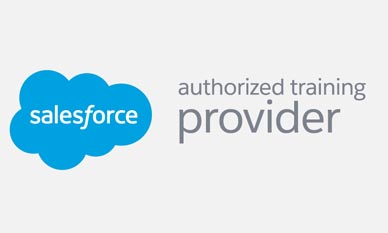
Discovery and Planning
- Discovery Meeting
- Getting Logged In
- Establishing Your Users and Development Process
Setting Up Users and Apps
- Overview of User Access on the Wave Analytics Platform
- Creating Wave Analytics Permission Sets
- Assigning Permission Set Licenses and Permission Sets
- Creating and Sharing Wave Analytics Apps
Connecting Data
- Overview of Connecting Data
- Data Mapping
- Overview of the Dataflow Process
- Designing a Dataflow
- Loading External CSV Data into a Dataset
- Creating and Running a Dataflow
- Optimizing Dataflows
- Preparing Data with Dataset Recipes
- Additional Dataflow Transformations
Securing Your Data
- Overview of Security in Wave Analytics
- Determining Security Requirements
- Overview of Using Predicate Filters with Salesforce Data
- Implementing Ownership-Based Row-Level Security
- Implementing Role-Based Row-Level Security
- Implementing Team-Based Row-Level Security
- Overriding Security for Implementation and Testing
Building Dashboards with Templates and Mobile Apps
- Overview of Wave Analytics Dashboard Layout Templates
- Overview of JSON for Dashboards
- Building a Dashboard Using an Existing Layout
- Translating Browser Dashboards to a Mobile Device
- Creating/Updating Mobile Dashboard Layouts
Connecting Data Sources, Results and Selection Bindings
- Limitations of Filters in Lenses and Dashboard in the UI
- Creating a Dynamic Top-N Filter
- Optimize a Multi-Dataset Dashboard by Connecting Data Sources
- Creating a Dynamic Filter with Results Binding
Modifying Queries in Dashboards
- Creating a YoY Growth Dashboard
- Creating a Sales Delta Dashboard
- Overview of Modifying Queries in a Dashboard
- SAQL Overview
- Add an External Salesforce Object to a Wave Dashboard
Using Extended Metadata in a Dataset
- Overview of Extended Metadata (XMD)
- Backing Up and Uploading a Dataset’s XMD File
- Adding Quick Action Menus For Records in Wave
Working with data and dashboards in Wave Analytics is ideal for integration specialists who want to learn more about connecting and securing data in Wave. This course is also great for business analysts or developers interested in creating advanced dashboards.
Salesforce knowledge, including: navigation, schema, security models, users, profiles, and permission sets. In addition, students should be proficient in Wave data exploration, building Wave dashboards with the UI, and basic JSON.
When you complete this course, you will be able to:
- Determine your user, data, and security requirements, and establish a development process.
- Set up apps and control what users can do in Wave Analytics by assigning them permission set licenses, permission sets, and app permissions.
- Load an external CSV file to Wave, configure data replication schedules, and create and run JSON dataflow files to load Salesforce data and combine it with data from existing datasets.
- Understand and implement data security in Wave and override security for implementation and testing.
- Apply a Wave Analytics layout template to a dashboard and create a mobile dashboard layout.
- Explain the limitations of filters in lenses and dashboards, and overcome these through UI settings and modifying the compact form query.
- Explain the process of dashboard queries and modify a SAQL query to meet many analytic requirements.
- Create and upload an XMD file to modify a dataset’s metadata.
